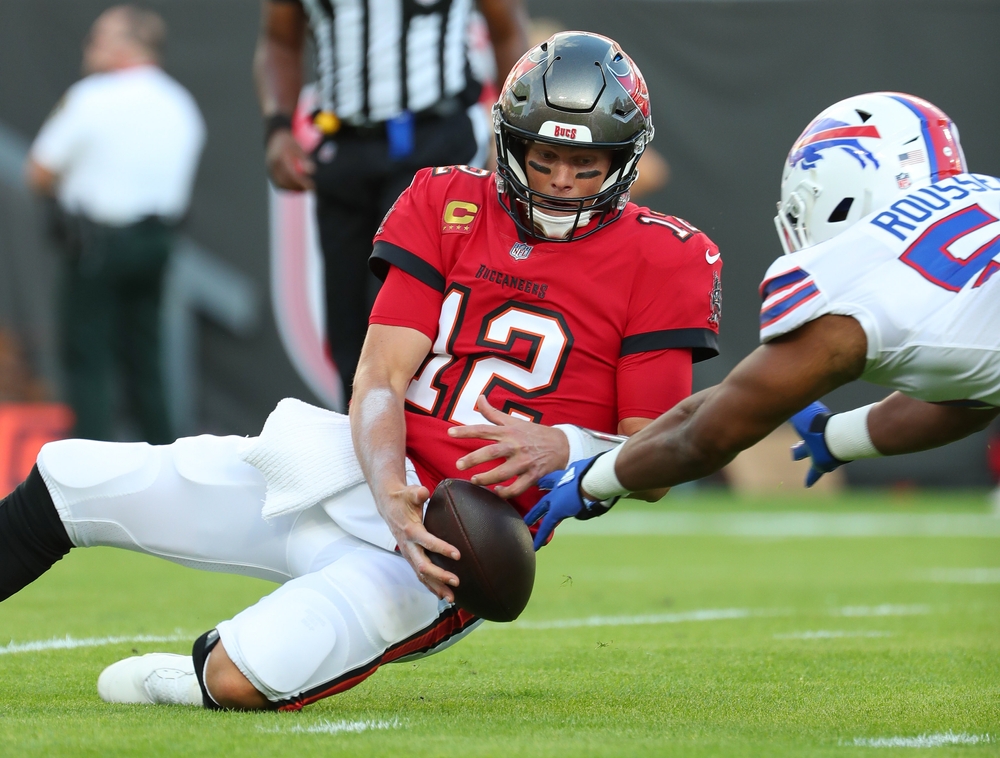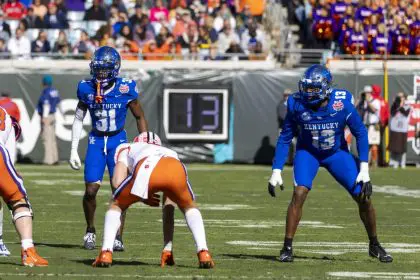The NFL Draft is absolutely loaded with hidden treasures in the most unexpected places, and a comprehensive analysis of every single draft slot from 1-262 reveals some mind-blowing patterns about where legendary talent actually comes from. From Peyton Manning’s dominance at number one to Tom Brady legendary late-round steal, every single pick in the draft has produced at least one player worth remembering.
This exhaustive breakdown of the best player ever selected at each draft position proves that championship-caliber talent can emerge from anywhere in the draft. When you discover that some of football’s greatest players were found in the seventh round, it completely changes how you view draft strategy and talent evaluation.
First round royalty that defines draft expectations
The top of the draft delivers exactly what you’d expect – absolute legends who transformed the NFL. Peyton Manning earning the top spot at number one makes perfect sense when you consider his five MVP awards, two Super Bowl championships, and records that still stand today. Five MVPs and 55 touchdown passes in a single season? That’s the kind of production that justifies first overall selections.
Lawrence Taylor claiming the second overall spot proves that defensive players can be just as impactful as quarterbacks when they completely revolutionize their position. Being one of only two defensive players to ever win league MVP puts Taylor in absolutely rarefied air that few athletes in any sport can match.
The early first round continues delivering Hall of Fame excellence with Barry Sanders at three, Walter Payton at four, and Deion Sanders at five. When you have guys with awards named after them competing for draft slots, you know you’re dealing with all-time greatness.
The quarterback revolution that changed everything
Patrick Mahomes being named the best tenth overall pick despite being only halfway through his career speaks volumes about his historic start. Three Super Bowl championships and three Super Bowl MVPs by age 28 suggests he’s building a case for greatest quarterback ever before our very eyes.
Dan Marino landing at pick 27 proves that incredible talent sometimes slides due to circumstances beyond anyone’s control. Leading the league in passing yards five times while playing in an era when defenses could actually hit receivers demonstrates just how special his arm talent really was.
The most shocking quarterback revelation comes at pick 199, where Tom Brady’s seven Super Bowl rings and five Super Bowl MVPs make him arguably the greatest draft steal in sports history. When the 199th pick becomes the GOAT, it proves that talent evaluation is still more art than science.
Hidden gems that prove late-round magic exists
Brock Purdy claiming the final spot at pick 262 as “Mr. Irrelevant” turned franchise savior perfectly bookends this analysis. Going from the last pick in the draft to starting quarterback for a championship contender represents the ultimate late-round success story.
The seventh round is absolutely loaded with incredible finds that changed franchise fortunes. Julian Edelman at 232 transformed from college quarterback to Super Bowl MVP receiver, while Richard Dent at 203 became a Super Bowl champion pass rusher despite being selected in the final round.
Even deeper picks produced legendary careers – Shannon Sharpe at 192 redefined the tight end position, while Terrell Davis at 196 won MVP and multiple Super Bowls before injuries cut short his brilliant career. These selections prove that championship-level talent exists throughout the entire draft.
Positional value versus pure talent debates
The analysis deliberately avoided overweighting quarterbacks to focus on pure talent rather than positional importance, leading to some fascinating choices. Ed Reed being selected over Aaron Rodgers at pick 24 highlights how dominant the legendary safety was at his position.
When the best safety ever (Reed with 64 interceptions in 174 games) gets chosen over a four-time MVP quarterback, it demonstrates just how exceptional Reed’s ball-hawking abilities really were. Sometimes individual dominance at a position trumps positional value in evaluating pure talent.
This approach also explains why players like Jerry Rice at 16 and Lawrence Taylor at 2 easily claim their spots – when you’re the undisputed greatest ever at your position, draft slot becomes almost irrelevant to your legacy.
The offensive line appreciation that’s long overdue
Offensive linemen dominate the middle and later rounds of this analysis, proving that elite blockers often provide incredible value relative to their draft position. Walter Jones at sixth overall represents the gold standard for offensive tackle excellence, while players like Bruce Matthews and Will Shields show how consistency and longevity create Hall of Fame careers.
The fact that so many guards and centers appear on this list demonstrates how teams that find elite offensive line talent outside the first round gain massive competitive advantages. When you can build championship-level protection with mid-round picks, it frees up premium selections for skill positions.
Jason Kelce’s selection at 191 perfectly exemplifies this phenomenon – a sixth-round center becoming the emotional leader of a Super Bowl championship team while playing at an All-Pro level for over a decade.
Defensive players who changed the game forever
The defensive side of this analysis reveals how game-changing players emerged throughout the draft. J.J. Watt at 11 dominated with three Defensive Player of the Year awards, while Aaron Donald at 13 redefined interior pass rush with his unprecedented sack production from the tackle position.
Middle linebacker greatness appears consistently throughout the draft, from Ray Lewis at 26 to Mike Singletary at 38 to Zach Thomas at 154. The fact that elite linebackers can be found across all rounds suggests that instincts and football IQ matter more than measurables at that position.
The secondary produces incredible value in unexpected places, with Ed Reed at 24, Ty Law at 23, and countless other Pro Bowl defensive backs found well outside the first round. Elite ball skills and coverage ability translate regardless of draft position.
Special teams and return specialists matter more than expected
The inclusion of return specialists like Devin Hester at 57 and Dante Hall at 153 acknowledges how game-changing these players can be. When someone can literally flip field position and score from anywhere on the field, their impact extends far beyond traditional statistics.
Hester’s 20 return touchdowns and Hall of Fame induction prove that elite return ability deserves recognition alongside traditional position players. Sometimes the most exciting players aren’t the ones running traditional offensive plays.
Even kickers and punters make appearances on this list, with players like Gary Anderson and Shane Lechler proving that specialists can provide decades of value when selected in appropriate rounds.
Modern players already making their mark
Several current players have already established themselves as the best ever at their draft slots, from Justin Jefferson at 22 to George Kittle at 146. These selections prove that elite talent continues emerging throughout the draft in today’s NFL.
Fred Warner at 70 representing modern linebacker excellence while Tyreek Hill at 165 showcases how game-breaking speed can be found in the fifth round. The fact that recent picks are already claiming historical honors suggests today’s talent evaluation might be improving.
The challenge of comparing active players to retired legends creates fascinating debates about longevity versus peak performance, with players like Mahomes and Jefferson building cases for all-time greatness despite relatively short careers.
This comprehensive draft analysis proves that NFL teams can find championship-caliber talent at literally every single pick in the draft. From first overall legends to seventh-round gems, the key is recognizing that talent evaluation remains an imperfect science where incredible players can emerge from anywhere.















